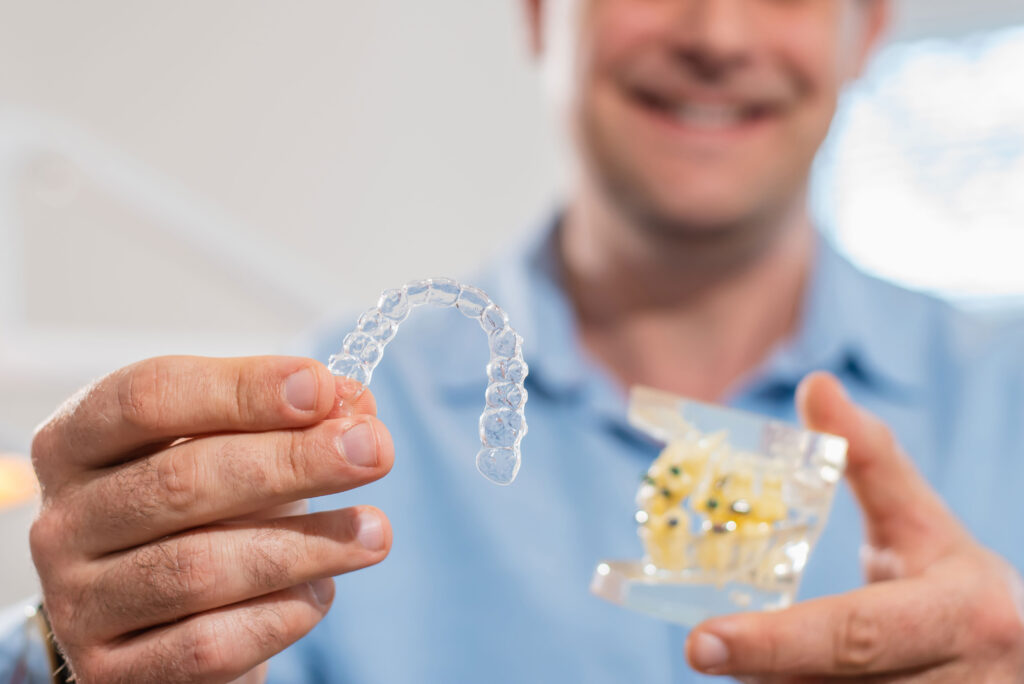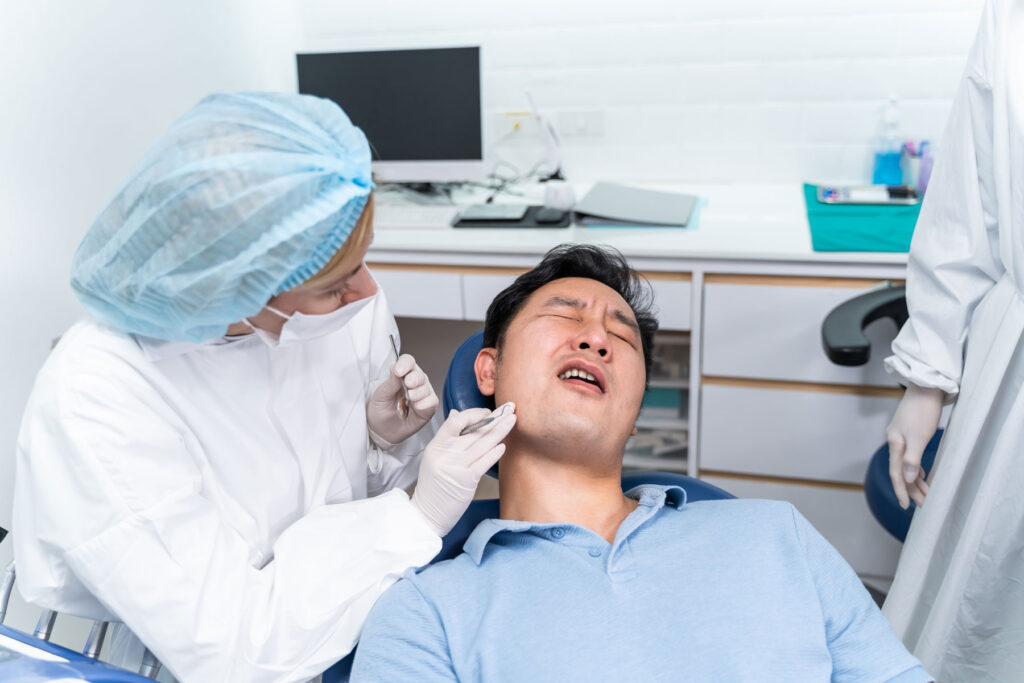Many people are surprised to learn that something as simple as using a straw can be a major risk after a tooth extraction. The reason is all about the healing process and protecting the delicate blood clot that forms in the socket where the tooth was removed. This blood clot is absolutely crucial for proper healing. It acts as a protective bandage, covering the underlying bone and nerves and providing a foundation for new tissue to grow. When you use a straw, the suction created in your mouth can dislodge this blood clot, leading to a painful condition known as a dry socket. This is a very serious complication that can significantly delay your recovery and cause intense, throbbing pain. Our patients often ask us, “how long after tooth extraction can i use a straw?” and we stress the importance of following our instructions carefully to avoid this outcome.
- The suction from a straw can dislodge the blood clot in the extraction site.
- The blood clot protects the underlying bone and nerves.
- Dislodging the clot leads to a painful condition called dry socket.
Beyond the dry socket, the suction can also introduce bacteria and other debris into the open wound, increasing the risk of infection. Your mouth is a sensitive ecosystem, and a recent extraction leaves it vulnerable. By avoiding straw use after tooth removal, you are giving your body the best chance to heal cleanly and quickly. We want to make sure you have a smooth and pain-free recovery. That’s why we provide clear, easy-to-follow instructions on post-extraction care. Our team at Smiles for Health DDS is dedicated to ensuring you have a positive experience from start to finish, and that includes a swift and uncomplicated healing period. We have seen countless individuals who have suffered because they have not followed the instructions and our goal is to help you avoid that. We also help you with other dental problems such as dental sealants to help prevent cavities from happening in the first place.
It is critical to understand the risks involved with using a straw after a tooth extraction. The force of the suction, even when you think you’re being gentle, is powerful enough to pull the clot right out. This leaves the bone and nerve endings exposed to air, food particles, and liquid, which can cause significant pain and a noticeable bad taste in your mouth. This is not a risk worth taking for a quick sip of a drink. While it may seem like a minor inconvenience, your adherence to this rule is a major factor in preventing complications. Our team at Smiles for Health DDS is always here to answer your questions and provide support during your recovery. We want to ensure you have a comfortable and successful healing process. For more information on post-operative care, you can read our detailed instructions on how to care for your mouth after a dental extraction. We also help you with other dental services like root canals if the pain is from an infection. Our goal is to make sure you have all the tools you need for a quick recovery. We want you to live a pain-free life and to help you with that we invite you to contact us today for any questions.
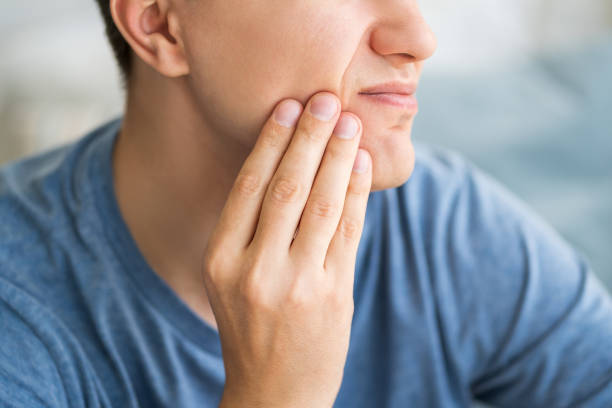
How Long Should You Wait Before Using a Straw Again?
This is the most common question we get after a tooth extraction, and for good reason. Patients want to know when they can get back to their normal routines. The general recommendation for straw use after tooth removal is to wait at least 72 hours, which is three full days. This is because the blood clot is most fragile and at the highest risk of being dislodged during the first 24 to 48 hours after the procedure. By waiting the full three days, you give the clot enough time to stabilize and begin the initial stages of healing. After this period, the risk of developing a dry socket from using a straw is significantly reduced. This waiting period also applies to other activities that create suction in the mouth, such as smoking or spitting vigorously.
- Wait at least 72 hours, or three full days, to use a straw.
- This period allows the blood clot to stabilize and begin healing.
- The same rule applies to smoking or vigorous spitting.
While three days is the standard guideline, it’s always best to listen to your body and your dentist’s specific instructions. Every person’s healing process is unique, and if you have multiple extractions or a more complex procedure, your dentist might recommend waiting even longer. It’s much better to be overly cautious than to risk a painful complication. When you are ready to begin drinking from a straw again, start slowly and pay attention to how your mouth feels. If you experience any pain or discomfort, stop immediately and revert to sipping from a cup. We are committed to helping you with your oral health and can provide services from dental bridges to filling a gap that you may have from your extracted tooth. We also provide dental implants for a more permanent solution. Our team at Smiles for Health DDS can provide you with all the necessary post-operative care instructions to ensure you have a speedy and complete recovery.
It’s important to remember that when to drink with a straw after extraction is not a race. Your oral health is a marathon, not a sprint. Taking a few extra days to heal properly is a small price to pay for avoiding the pain and hassle of a dry socket. During the waiting period, you can still stay hydrated by sipping liquids from a glass or using a spoon for soups. We understand that this can be an inconvenience, but we know it is for your benefit. If you have any questions about your recovery or when you can resume normal activities, we encourage you to give us a call. Our compassionate team at Smiles for Health DDS is always here to provide guidance and support. We can also perform services such as smile makeovers after you have fully recovered from your extraction. We are committed to making sure you are happy with the results. For any other questions you may have, you can contact us for more information and to schedule an appointment.
What Happens If You Use a Straw Too Early?
Using a straw too early can have serious consequences, primarily leading to the development of a dry socket. A dry socket, also known as alveolar osteitis, is one of the most painful complications that can occur after a tooth extraction. It happens when the blood clot that has formed in the tooth socket either fails to develop or becomes dislodged, leaving the underlying bone and nerve endings exposed. When this happens, you will likely experience a sharp, throbbing pain in the area of the extraction, which can radiate to your ear, eye, or neck. This pain is often severe and can be difficult to manage with over-the-counter pain relievers. This is a very clear example of what happens when you don’t follow the instructions on how long after tooth extraction can i use a straw.
- A dry socket occurs when the blood clot is dislodged, leaving bone and nerves exposed.
- Symptoms include severe, throbbing pain that can radiate to the ear, eye, and neck.
- The pain is often not relieved by over-the-counter medication.
In addition to the intense pain, a dry socket can also cause a foul odor and an unpleasant taste in your mouth. You may even be able to see an empty socket where the blood clot should be. If you suspect you have a dry socket, it’s crucial to contact your dentist immediately. The condition requires professional treatment, which involves cleaning the socket and placing a medicated dressing to soothe the exposed nerves and promote healing. This treatment will help you manage the pain and can help the socket to heal properly. It is important to remember that using a straw is not the only cause of dry socket, but it is one of the most common and easily avoidable. This is why we are always stressing the importance of avoiding straw use after tooth removal. Our team at Smiles for Health DDS is dedicated to helping you avoid this complication.
The discomfort from tooth sensitivity and the pain of a dry socket are two very different things. While a sensitive tooth might cause a jolt of pain, a dry socket is a constant, throbbing pain that can last for days without professional intervention. By being patient and following the recommended timeline for when to drink with a straw after extraction, you can spare yourself from this excruciating experience. We know it can be tempting to use a straw, but the risk far outweighs the reward. Our goal is to provide you with a smooth and comfortable recovery, and we are here to support you every step of the way. We can also help you with a range of services from dental fillings to dental crowns to help restore your smile back to its original beauty and strength. If you are experiencing pain after a tooth extraction, please do not hesitate to contact our friendly team at Smiles for Health DDS for assistance. We can even provide a cosmetic dentistry consultation after you have fully recovered. We are committed to helping you with all your dental needs.
What Are Safer Alternatives to Drinking with a Straw?
After a tooth extraction, you need to stay hydrated and nourished, but using a straw is out of the question for a few days. So, what are the safer alternatives? The simplest and best way to drink is to sip directly from a glass or cup. This method eliminates the suction that can dislodge the blood clot and cause a dry socket. When you sip from a glass, you are allowing gravity to do the work, which puts no pressure on the extraction site. This is the most crucial piece of advice we give to our patients on how long after tooth extraction can i use a straw to ensure a smooth recovery. It might feel a little awkward at first, especially if you’re used to drinking from bottles or tumblers, but it’s a small adjustment that makes a huge difference in your healing process.
- Sip directly from a glass or cup.
- Use a spoon for soups and other liquid foods.
- Opt for a wide-mouthed container to make sipping easier.
Another great option for staying nourished is to use a spoon for liquid-based foods like soups and smoothies. This allows you to get the nutrition you need without creating any suction in your mouth. You can also use a spoon to eat foods like yogurt, pudding, or applesauce. It’s important to choose foods that are soft and easy to swallow to avoid putting any stress on the extraction site. We want to make sure you have a comfortable and successful recovery. Our team at Smiles for Health DDS is dedicated to providing you with the best post-operative care instructions to help you navigate your recovery. We also provide information on a variety of other topics, such as TMJ and TMD treatment if you are experiencing pain from grinding your teeth.
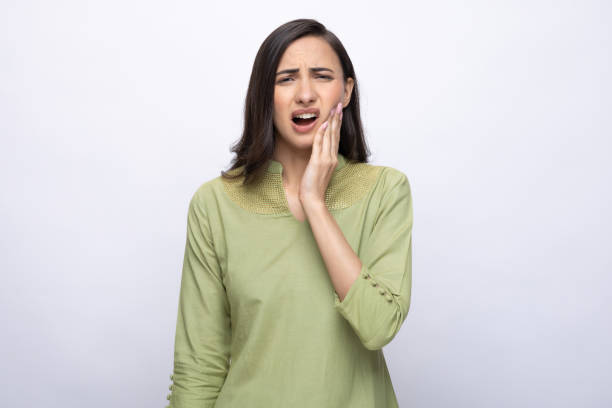
When it comes to beverages, it’s a good idea to stick to water and other non-acidic liquids during the first few days. Hot liquids can also be a problem as they can increase swelling and disrupt the blood clot. It’s best to let any beverages cool to a lukewarm or room temperature before drinking. While it might seem like a lot of rules, each one is designed to help you avoid complications and ensure a speedy recovery. We are always here to answer your questions on how to manage your post-extraction care. The key to successful healing is avoiding the temptation of straw use after tooth removal and other risky behaviors. We want you to heal properly and to be able to enjoy your life. After you have healed, we can help you get the smile of your dreams with a smile makeover and even a teeth whitening treatment. At Smiles for Health DDS, our priority is your health and comfort. For any questions you may have, you can contact us and we will be happy to help.
What Timeline Do Dentists Recommend for Recovery?
The recovery timeline after a tooth extraction is a question that comes up a lot. We get it; you want to know what to expect and when you can get back to normal. The initial 24 hours are the most critical. During this time, the blood clot is forming and is at its most vulnerable. This is when you should be extremely cautious about what you eat and drink, and absolutely avoid straw use after tooth removal. You should stick to soft foods and cool liquids, and resist the urge to rinse your mouth or spit forcefully. We often hear from patients who are confused about when to drink with a straw after extraction, and we always advise them to be extra careful during this initial period.
- The first 24 hours are the most critical for clot formation.
- Avoid vigorous rinsing, spitting, or using a straw during this period.
- Stick to soft foods and cool liquids to prevent irritation.
The next 48 hours are about consolidation. The blood clot is becoming more stable, and the initial stages of healing are underway. You can gradually introduce some solid foods back into your diet, but you should still be gentle with the extraction site. It’s still not a good idea to use a straw, as the suction can still cause problems. Many people are tempted to go back to their normal routines, but patience during this time is a virtue. Our team at Smiles for Health DDS is here to provide you with all the necessary guidance to ensure you follow the correct timeline for your recovery. We are here to help you get through your recovery and can also provide services for missing teeth with dental bridges to fill the gap.
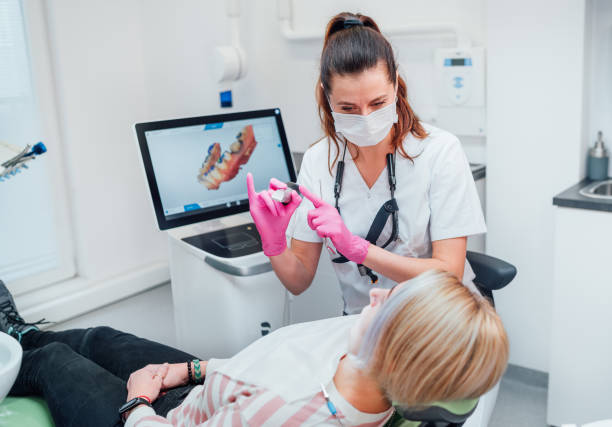
After the first 72 hours, the risk of a dry socket from using a straw is significantly reduced. At this point, you can generally resume most of your normal activities, including using a straw if you choose to. However, we always recommend that you start slowly and pay attention to how your mouth feels. If you experience any discomfort or pain, it’s best to stop and revert back to sipping from a cup. A full recovery, where the bone and tissue have completely healed, can take anywhere from a few weeks to a few months. This is why it’s so important to follow your dentist’s instructions.
- After 72 hours, the risk of dry socket from straw use decreases significantly.
- Gradually reintroduce normal activities and monitor for any discomfort.
- Full healing can take weeks to months, so continued care is important.
We are committed to helping you with all your dental needs. If you have any questions about your recovery timeline or your overall oral health, our expert team at Smiles for Health DDS is always ready to assist. We can help you with anything from a basic cleaning to more complex procedures. We are ready to help you with dental crowns to help restore your teeth. Don’t let the fear of a long recovery stop you from getting the dental care you need. We are here to help you get back to your life and to get the smile you have always wanted. For more information, please visit our page on dental extractions.
How to Prevent Dry Socket and Other Complications?
The thought of a dry socket is enough to make anyone want to follow their dentist’s instructions, but what exactly can you do to prevent it and other complications? The number one rule is to avoid anything that creates suction in your mouth. This includes using a straw, smoking, and vigorous spitting. The suction is a direct threat to the blood clot and is the most common cause of dry socket. This is a crucial part of the answer to the question, how long after tooth extraction can i use a straw. By simply not using a straw, you are taking a major step towards a pain-free recovery.
- Avoid using a straw, smoking, and vigorous spitting.
- Do not disturb the extraction site with your tongue or fingers.
- Follow your dentist’s instructions for rinsing and cleaning.
Another important step is to avoid touching the extraction site with your tongue or fingers. It can be tempting to poke at the area, but this can dislodge the blood clot and introduce bacteria. You should also follow your dentist’s specific instructions for rinsing and cleaning. In the first 24 hours, you should not rinse at all. After that, your dentist may recommend a gentle salt water rinse to help keep the area clean. It’s important to let the liquid sit in your mouth and then let it fall out naturally, rather than spitting forcefully. This is also why we advise against straw use after tooth removal. Our team at Smiles for Health DDS will provide you with a comprehensive set of post-operative instructions to help you navigate your recovery with ease. We also provide services such as children’s dentistry to help the younger members of the family with their oral health.
You can also prevent complications by choosing the right foods. Stick to soft foods and cool liquids for the first few days. Avoid anything that is hot, hard, or crunchy, as these can irritate the extraction site and cause pain. We want you to heal properly and get back to your life as quickly as possible. We are ready to help you with your oral health needs and can provide services such as a full dental exam to help you with any of your dental needs. We also provide a full range of services from dental implants to onlays and inlays to restore your smile. If you are experiencing any pain or have any questions, our compassionate team at Smiles for Health DDS is ready to help. We are dedicated to providing you with the best care and to make sure you are comfortable. We are committed to helping you with all your dental needs. We invite you to contact us today to learn more.
Frequently Asked Questions
How long after tooth extraction can I use a straw without causing problems?
Most dentists recommend waiting at least 48–72 hours. Smiles for Health DDS explains that how long after tooth extraction can I use a straw depends on clot stability. Straw use after tooth removal too soon increases the risk of dry socket, and knowing when to drink with a straw after extraction is essential for healing.
Why does straw use after tooth removal cause issues with healing?
The suction can dislodge the clot. Smiles for Health DDS notes that patients asking how long after tooth extraction can I use a straw should know suction is the main danger. When to drink with a straw after extraction is after the site has closed enough to be stable.
Can I use a straw after extraction if I sip very gently?
No, even gentle sipping creates pressure. Smiles for Health DDS stresses that how long after tooth extraction can I use a straw is never less than 48 hours. Safe straw use after tooth removal requires patience, and when to drink with a straw after extraction must align with dentist guidance.
Does straw use after tooth removal increase the risk of dry socket more than smoking?
Both cause suction, but smoking adds chemicals that worsen healing. Smiles for Health DDS explains that how long after tooth extraction can I use a straw is safer after a few days, while smoking should be delayed even longer. When to drink with a straw after extraction should always be confirmed with your dentist.
How long after tooth extraction can I use a straw if stitches were placed?
Stitches help, but the risk remains. Smiles for Health DDS shares that straw use after tooth removal with stitches is still discouraged for 48 hours. When to drink with a straw after extraction may vary by case.
Can straw use after tooth removal affect upper teeth differently from lower teeth?
Lower teeth are more prone to dry socket. Smiles for Health DDS clarifies that how long after tooth extraction can I use a straw depends on extraction site. When to drink with a straw after extraction is safest after your dentist confirms healing.
What drinks are safe if I can’t use a straw after tooth extraction?
Water, smoothies, or milkshakes are fine as long as they’re sipped without suction. Smiles for Health DDS recommends avoiding straw use after tooth removal until healing advances. How long after tooth extraction can I use a straw depends on the drink and healing progress, but when to drink with a straw after extraction is always delayed.
How long after tooth extraction can I use a straw if there is no pain?
Even without pain, avoid straws for 2–3 days. Smiles for Health DDS explains that straw use after tooth removal is risky regardless of comfort. When to drink with a straw after extraction must follow healing, not just pain level.
Can reusable silicone straws make straw use after tooth removal safer?
No, the material doesn’t change the suction risk. Smiles for Health DDS notes that how long after tooth extraction can I use a straw isn’t affected by straw type. When to drink with a straw after extraction is based only on healing time.
What does Smiles for Health DDS recommend for patients asking when to drink with a straw after extraction?
Smiles for Health DDS recommends waiting at least 72 hours. How long after tooth extraction can I use a straw is always answered with caution. Safe straw use after tooth removal ensures smooth recovery.
Is it safe to drink smoothies from a spoon instead of a straw?
Yes, using a spoon avoids suction and protects the healing clot.
Can I use a straw sooner if I’ve had multiple teeth removed?
No, in fact, multiple extractions may require waiting even longer for straw use
Does using a straw too soon always cause dry socket?
Not always, but it significantly increases the chances of clot loss and complications.
Can I switch to a straw earlier if I’m only drinking room-temperature water?
No, temperature doesn’t matter—the suction itself is the problem.
When should I call my dentist if I accidentally used a straw after extraction?
If you notice increased pain, bleeding, or foul odor, call immediately to rule out dry socket



